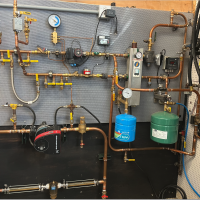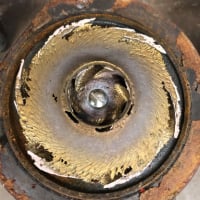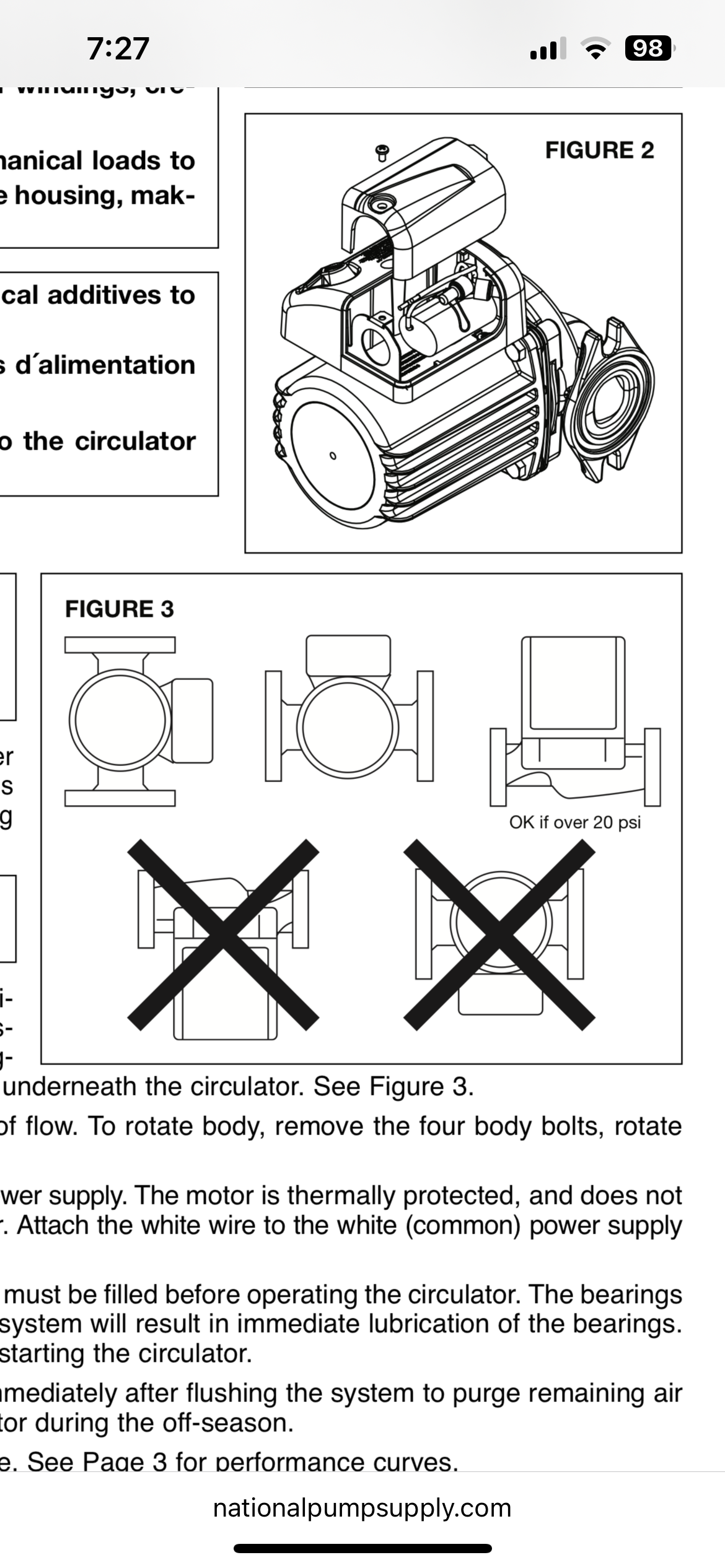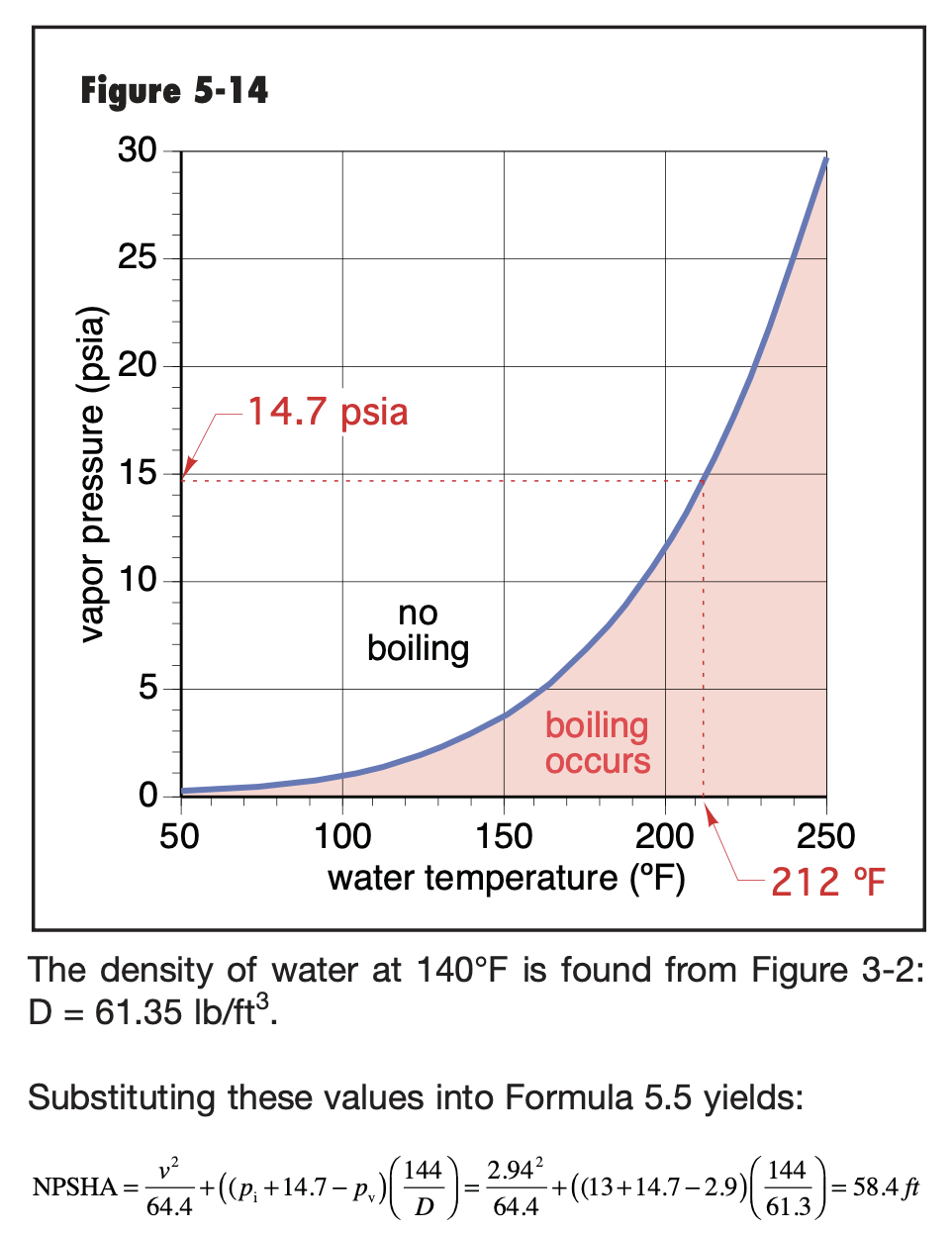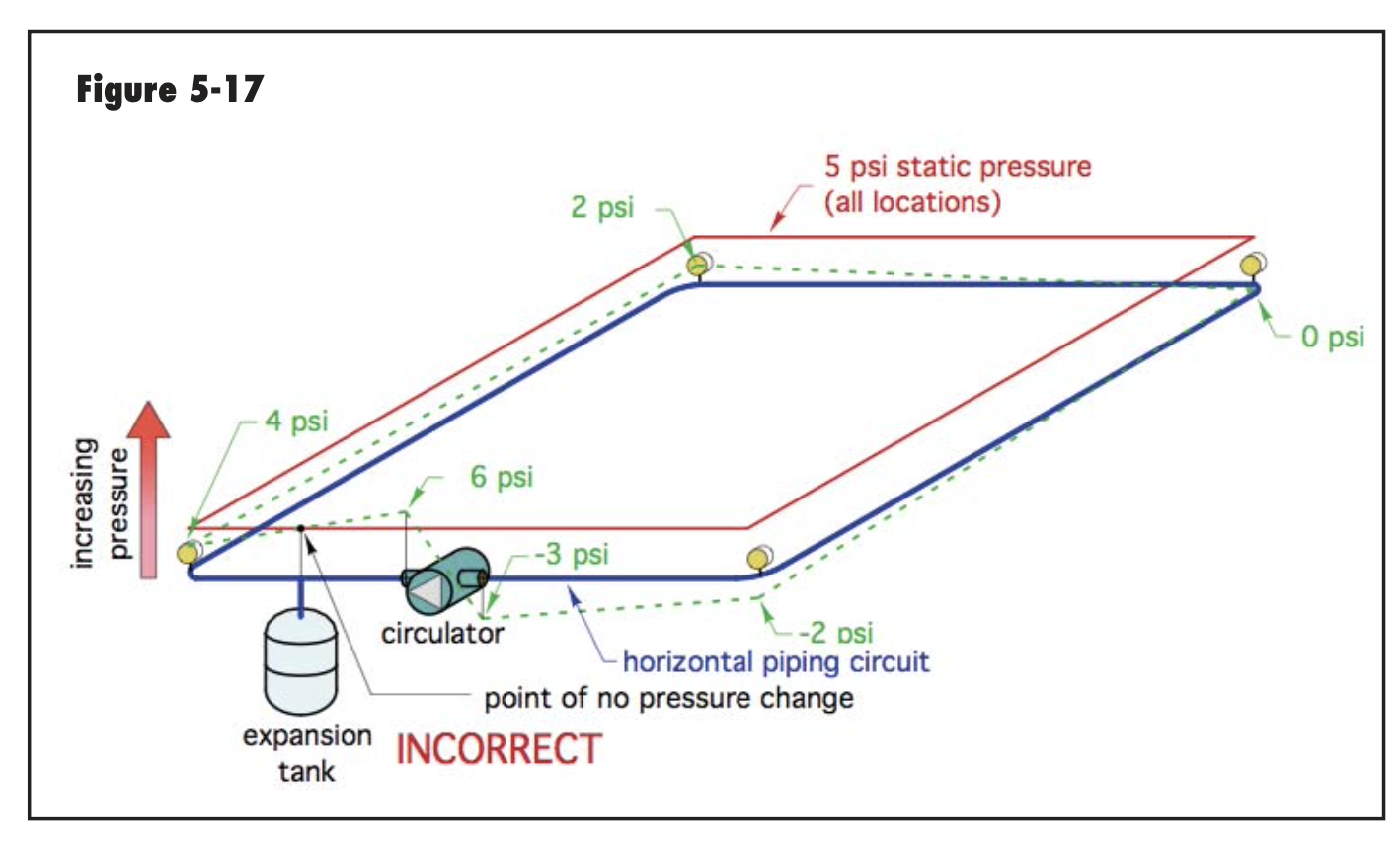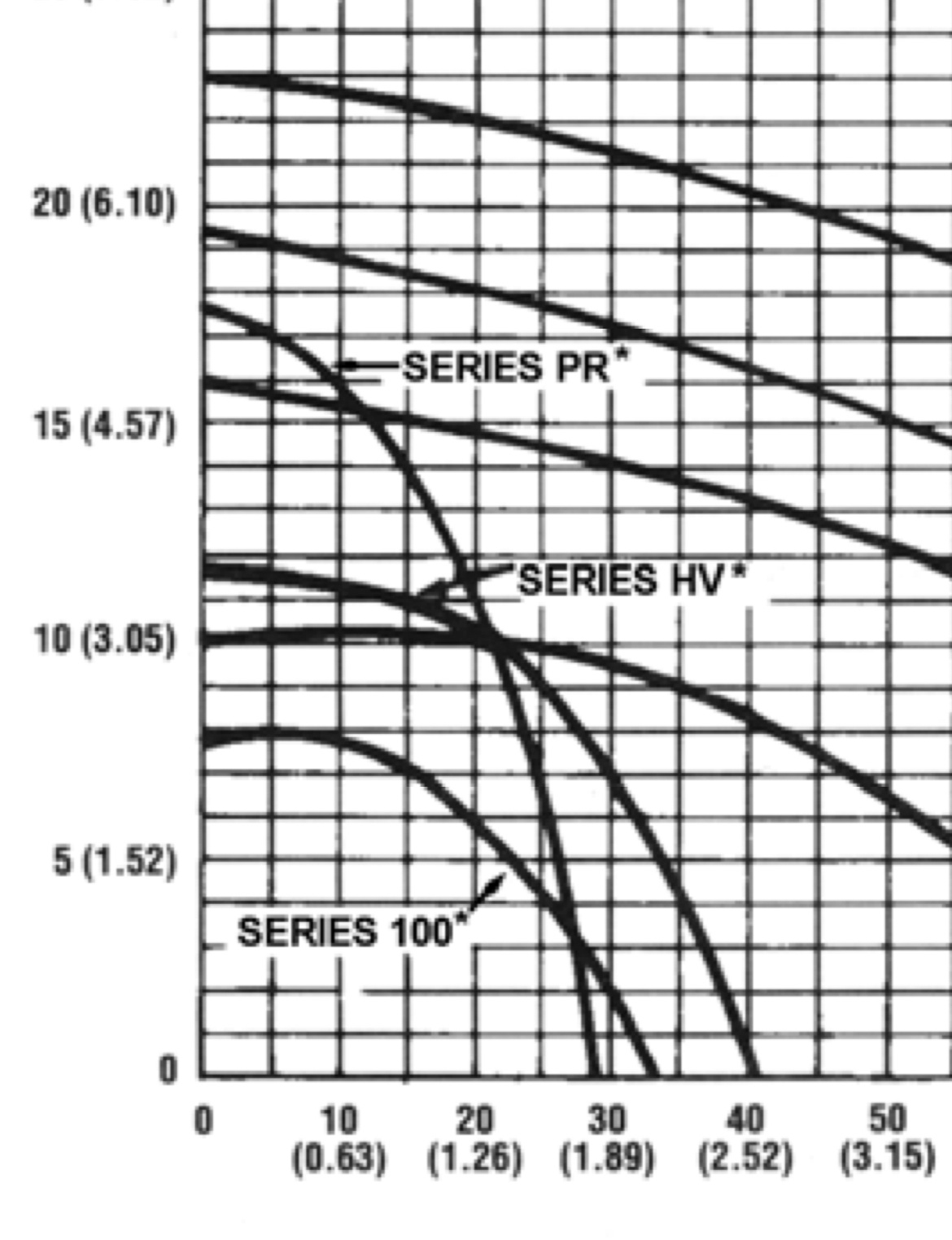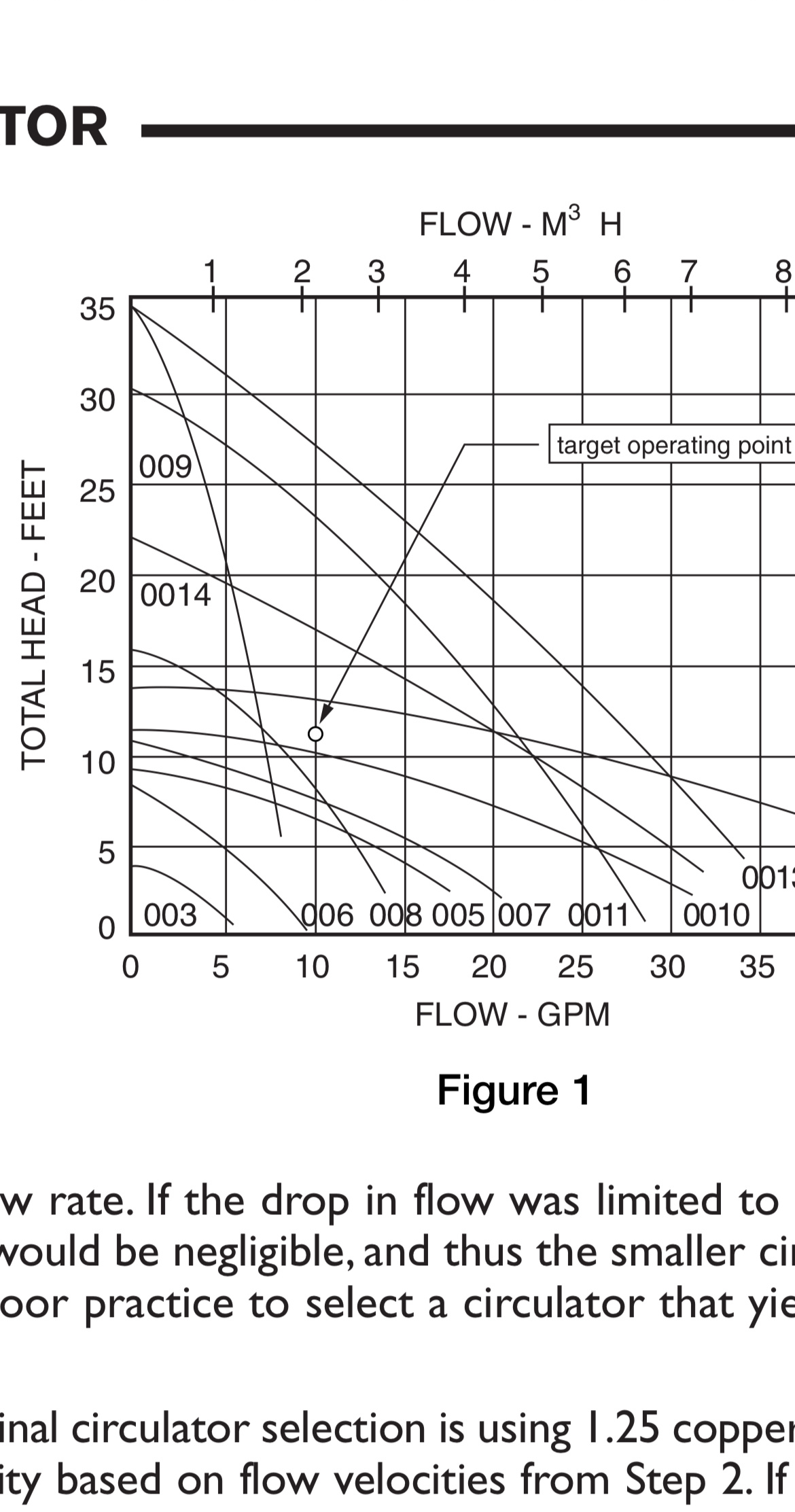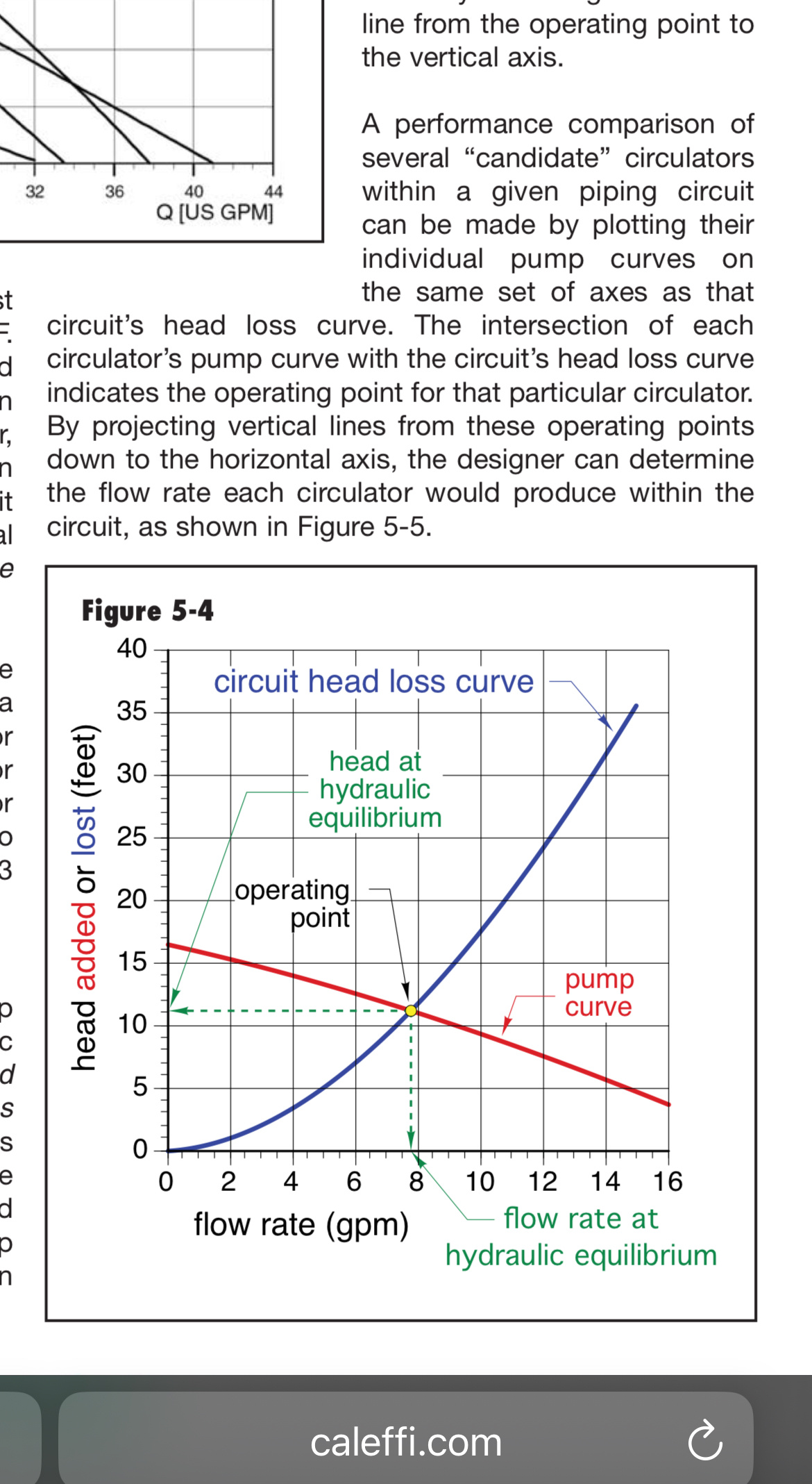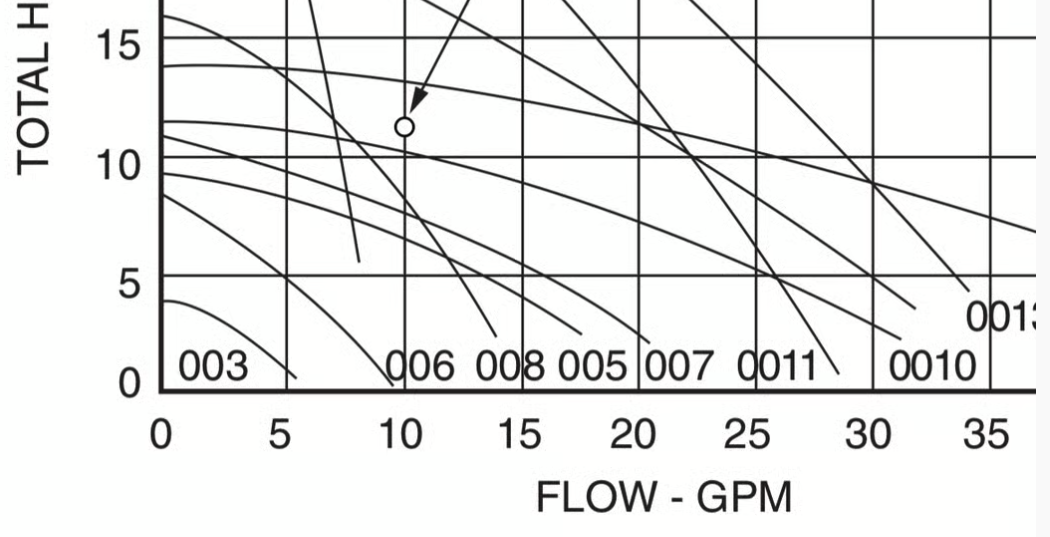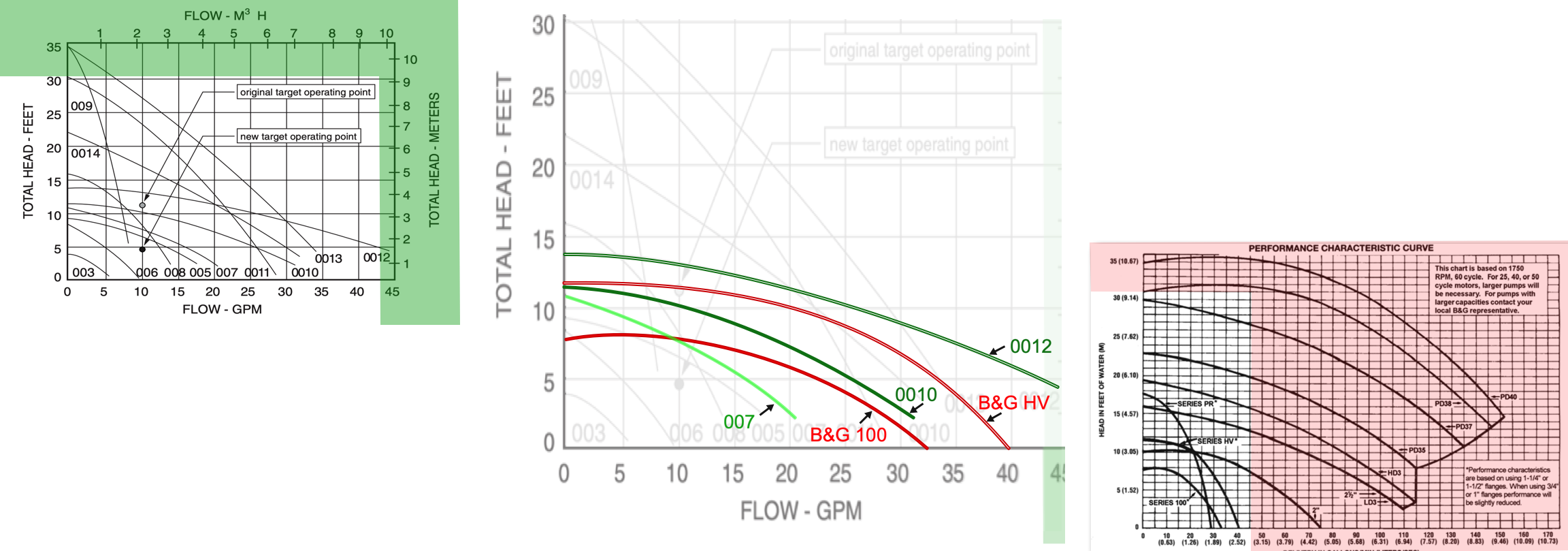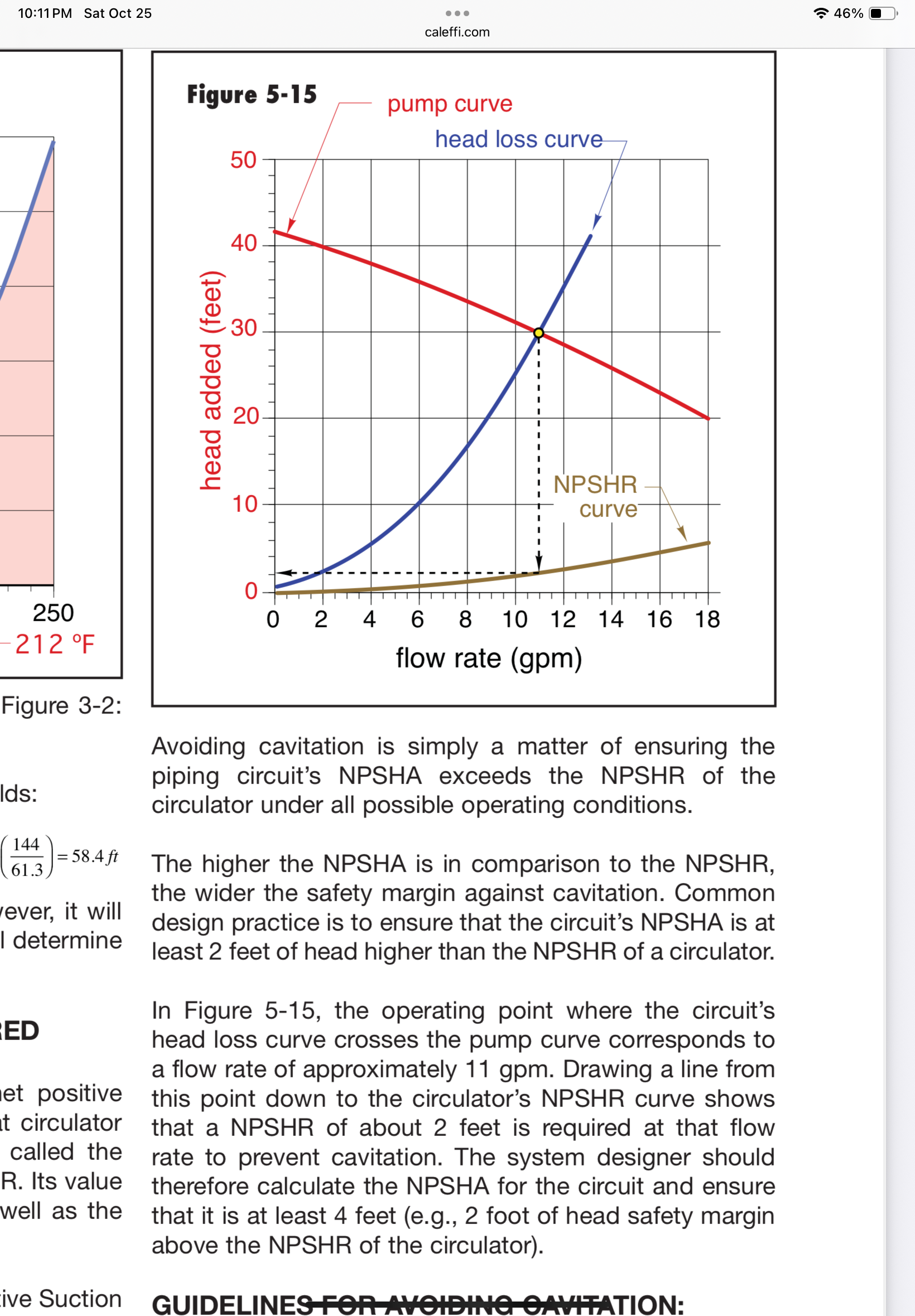Circulator noise when hot?
Hi everyone!
A new taco 0010 was installed on my hydronic heating system. I’m noticing a strange noise only when the circular is circulating hot water (not when the boiler is off on mild days and just circuiting cooler water).
Not sure how I can share the nose here in the forum. It’s a random knocking sound the is coming from the circulator. Not loud but noticeable.
I’ll try to find a way to share the sound.
Thakar for any help!
Comments
-
-
@hot_rod thank you.
CG8 (202,000 output)
2 pipe reverse return.
circulator on the return.
expansion tank on supply.Cold is 15psi
Hot is 19psi or so
Fin tube
Delivering heat well.
0 -
-
@mattmia2 thank you.
if the pump is too large, how does the temp of the water increase this possible cavitation issue? No noise when water is cooler.
The previous pump was a series 100.
I believe the head and flow needs are in the ballpark for the 0010.Thank you!
0 -
Cavitation is a basically a function of temperature and pressure. The hotter the water the easier it is to cavitate because it's already closer to the boiling point. Likewise insufficient NPSH for the pump at its operating point on the curve also makes it possible to cavitate in the eye of the impeller because that's where the pressure drops as the pump pulls the water in. When the pressure drops low enough for the water at that temperature to vaporize, then you have cavitation.
What does the noise actually sound like? does it sound like rocks in your pump? that's the lovely classic cavitation sound.
Off the top of my head I think the 0010 curve is pretty similar to a series 100, but I also don't usually deal with small pumps like those
1 -
any flo-checks in the system. Those can make a tapping sound
Look for a partially plugged strainer, valve not fully open
Might pull the motor from the body and look for anything unusual
Maybe a warped impeller that expands and rubs when hot?
It seems like a high flow circ, which would be correct for that size boiler
Bob "hot rod" Rohr
trainer for Caleffi NA
Living the hydronic dream0 -
thank you @pumpcontrolguy .
This explanation makes sense to me.
I did notice that that motor body (logo) is upside down yet the flow arrow on the body is facing the correct direction.
Does the motor body direction matter with these wet rotor type circulators?
0 -
Bob "hot rod" Rohr
trainer for Caleffi NA
Living the hydronic dream0 -
"circulator on return, expansion on supply" "noise only when hot"
Equals cavitation. There are other potential problems — but the overall bottom line is that most of your pressure loss in the system is between the expansion tank and the inlet to the pump — so the pressure at the inlet to the pump is a lot less than the "system" pressure, and when the water is hot, it boils — cavitates — at that low pressure.
All the above suggestions are good — but move the expansion tank to the inlet of the pump and live happily ever after.
Br. Jamie, osb
Building superintendent/caretaker, 7200 sq. ft. historic house museum with dependencies in New England2 -
vapor pressure is what is at work with some cavitation. It is the pressure required to prevent water from flashing to steam. There is a pressure drop at the inlet "eye" of the impeller, if it drops below the vapor pressure of the water at the temperature it sees, then vapor pockets form.
The piping schematic belows shows what can happen when you pump at the expansion tank, the PONPC. If the circuit allows the pressure to drop below the vapor pressure, that is where cavitation starts. Notice the negative pressure at the circ inlet.
The graph shows the pressure temperature relationship. Yes water can boil at 100°F. That is how evac tube solar collectors work. The vacuum on the fluid allows it to boil around 100°
At sea level pressure is 14.7 PSIA, water boils at 212°F.
Water boils at around 202°F in Denver at 5,000'
Bob "hot rod" Rohr
trainer for Caleffi NA
Living the hydronic dream0 -
thank you, @hot_rod .
this didn’t seem to be an issue with the series 100 in the past. Is there anything I could do to remedy this with the piping? Unfortunately, unable to pump away at this time.
0 -
@hot_rod , @pumpcontrolguy @Jamie Hall @mattmia2 , here is a link to the audio of the noise.
0 -
The two pumps have different intake pressure requirements.
As a temporary fix — mostly to avoid further damage to the pump —- you could try boosting the entire system pressure. But… you have to keep a margin below the safety valve,
Br. Jamie, osb
Building superintendent/caretaker, 7200 sq. ft. historic house museum with dependencies in New England0 -
yes the 0010’is a bit higher head circ, here are the two curves
The left vertical axis is shut down head. The head the circ would develop if it were moving 0 gpm, the lower horizontal axis
The series 100 is around 8’, the 0010 around 12’
You would need to define the circuit it is connected into to develop a system curve, example below.
The system curve lies over the pump curve to determine the OP, actual operating point. Could be the 0010 is just a bit higher head and causing the issue
If it is cavitation two things could correct it, raise the static pressure as @Jamie Hall mentioned, or lower the water temperature
Is there a valve on the discharge of the pump, maybe an iso flange? If so you could throttle away some of the head .
Bob "hot rod" Rohr
trainer for Caleffi NA
Living the hydronic dream0 -
does it have the integral flow check? that could be chattering.
if it is a single zone and doesn't have a dhw zone you can take the flow check out.
0 -
-
Gosh that pump isn’t that far off from the B&G. My next step would be to pull it. All sorts of stuff can end up in pump impellers
Bob "hot rod" Rohr
trainer for Caleffi NA
Living the hydronic dream0 -
thanks @hot_rod . Yes, I’m going to take a look at the impeller. Good idea.
Should I be concerned with this adding air to the system when I remove the motor body?
0 -
are there isolation valves on both sides of the pump? That minimizes the potential to allow a lot of air in.
I always leave the assembly bolts a bit loose and let the air burp out, then tighten the motor back in
Bob "hot rod" Rohr
trainer for Caleffi NA
Living the hydronic dream0 -
-
@AlwaysLearning2024 If the B&G Series 100 was working properly, why not install a circulator that has a more closely related performance curve? Maybe a Taco 007? Or another wet rotor circ. that will do the job. It seems the better option rather than changing and repiping, and so on, etc. etc.
1 -
That is a good sized boiler, is this in a residence?
If you in fact need 172,000 BTU/ hr output then you need to move around 17 gpm.
If you need 17 gpm and it has zone valves the 0010 is a nice flat curve circ for the job.
You want to run a circ mid curve ideally, aka the "knee" of the curve.
You could count up the amount of fin tube, just the finned element to get an idea of the BTU you actually can move into the home.
500 btu/ft is a good average X the number of feet give you actual required btu
Bob "hot rod" Rohr
trainer for Caleffi NA
Living the hydronic dream0 -
Thanks @hot_rod. This is a 4-family building.
@EdTheHeaterMan generously helped me work out the head and flow in the following post. I had to go with a 0010 and not the 0012/Series HV as Ed suggested.
This CG8 replaced a larger boiler in 1994 before I owned the building. The building is definitely plenty warm. Controlled by a TekMar 256.
0 -
thanks @Intplm. I thought the 0010 was a match but I must have been mistaken. Still learning so much here.
0 -
Sometimes plotting your system on a pump curve can be difficult when there are several different curves for many pumps. The fact that one brand uses a narrow pump chart and the other brand uses a flatter pump chart only confuses things. Only when you put all the pump curves that you are considering on the same chart, can you see the actual difference in each pump, and how that small change can affect your system. Here is that chart:
The left is the TACO and the right is the B&G published performance curves for several of their pumps.
In the center, I have flattened the B&G and made the TACO a little taller so all the HEAD and the GPM lines match up. Then I only selected the 5 pumps mentioned in this discussion. TACO 007, B&G 100, TACO 0010, B&G series HV, and the TACO 0012. When all the performance curves are lined up on the same chart, you can clearly see that the TACO 0010 has more pumping ability than the B&G 100. This may not be by much but perhaps just enough to cause your noise cavitation at the higher temperatures.
When throttling a ball valve on the discharge side of the TACO 0010 pump to reduce the flow rate in order to better match the B&G 100 a 10 or 15% closure may have no effect on the flow rate. You may need to get closer to 70% closure of a ball valve in order to cause a real reduction of the flow rate. Then the smallest adjustments after that may cause a large reduction in flow rate. Ball valves are not the best devices for that purpose however that is what you have to work with, so you need to use them.
Important NOT to throttle the inlet side of the pump. That will make things worse. Only throttle the discharge side of a pump to meter the flow in the system
Hope this info helps
Mr. Ed
Edward Young Retired
After you make that expensive repair and you still have the same problem, What will you check next?
1 -
some pump manufacturers also add the NPSH curve into the graphs, generally on larger sized pumps.
Once you define the OP, the point of hydraulic equilibrium, which is the point where the head added matches the head loss of the circuit.
From that point drop down to the NPSH curve.
NPSH is the amount of head required to avoid cavitation. NPSHA is the head available
Bob "hot rod" Rohr
trainer for Caleffi NA
Living the hydronic dream0
Categories
- All Categories
- 87.3K THE MAIN WALL
- 3.2K A-C, Heat Pumps & Refrigeration
- 61 Biomass
- 427 Carbon Monoxide Awareness
- 119 Chimneys & Flues
- 2.1K Domestic Hot Water
- 5.8K Gas Heating
- 115 Geothermal
- 165 Indoor-Air Quality
- 3.7K Oil Heating
- 76 Pipe Deterioration
- 1K Plumbing
- 6.5K Radiant Heating
- 395 Solar
- 15.6K Strictly Steam
- 3.4K Thermostats and Controls
- 56 Water Quality
- 51 Industry Classes
- 50 Job Opportunities
- 18 Recall Announcements
